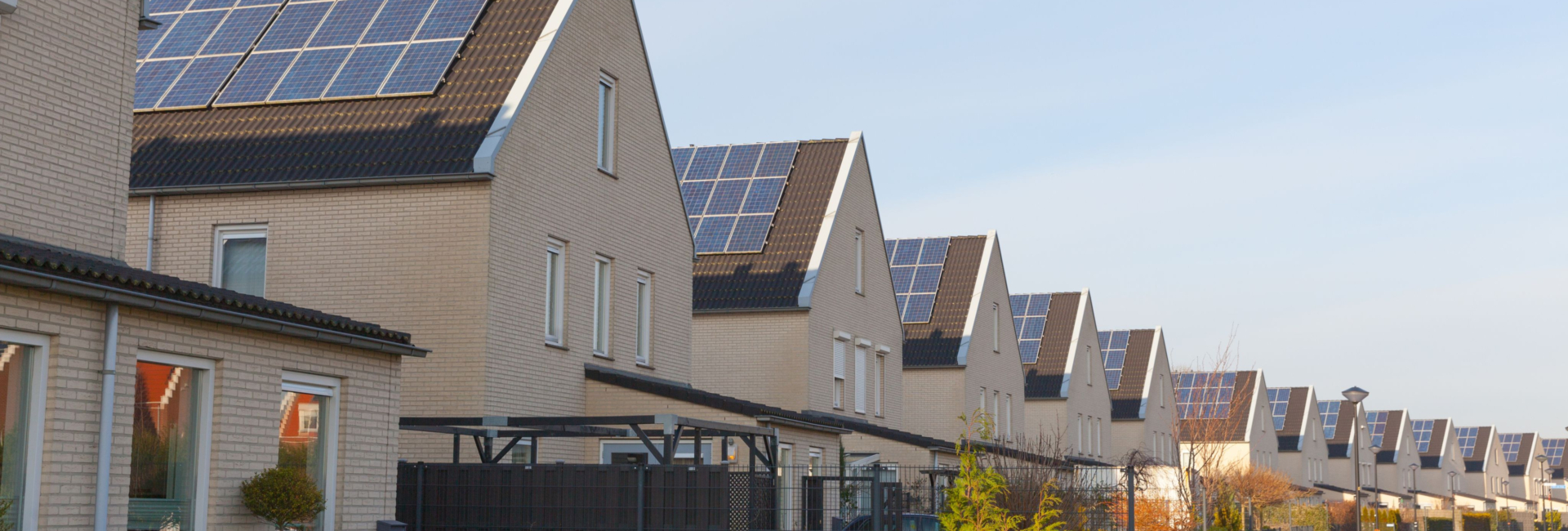Which energy-saving features are homebuyers now looking for?
The housing market has been showing remarkable resilience through some of the most testing times in recent memory. While some volatility is only to be expected in the current cost-of-living crisis, demand remains at an all-time high. However, if spiralling energy costs are teaching us anything at all, it’s that we should focus on making properties more efficient.
The recent Green Homes Report published this summer by Rightmove is one of many market indications confirming that energy efficiency improvements can materially increase the value of a property. The findings showed a 16% rise in property value for homes going from an EPC F rating to a C rating, over and above any local house price growth.
That was before the current energy crisis intensified over the last couple of months.
Now, “having a home that’s energy efficient is going to become more important than ever as the price of heating rises to levels not seen before; it is important that our homes are keeping the warmth in,” says David McGrail, a Director at First Mortgage.
Add to that the threat of climate change looming large over us all and the government’s target to get as many residential properties as possible to an EPC rating of C by 2035 as part of reaching Net Zero by 2050. The net result is clear: Home buyers now and in the future are going to be much more inclined to invest in properties with energy-efficient features present.
Another key consideration not to be underestimated concerns the question of mortgageability. How will less energy-efficient properties fare compared with houses that are built for today and tomorrow? There are now suggestions that in years to come, homes with poor EPC ratings might be disadvantaged when it comes to getting a good mortgage deal.
In any event, buyers will increasingly be expecting to get a discount on the agreed purchase price if their home survey flags up single glazing, poor insulation, old heating systems or other uneconomical and environmentally unfriendly problems that are simply no longer deemed acceptable.
On the other hand, for sellers who are ahead of the curve, making the right home improvements before putting their home on the market might prove to be a shrewd move. Instead of having to lower the sale price to accommodate missing green features, they will in fact be reaping the rewards of their proactive energy efficiency improvements.
So, what kind of features are most important?
Until quite recently, the general advice given to homeowners was aimed at becoming more financially savvy consumers rather than active eco-warriors. Making small changes in the home to save money was the mission, while being kind to the planet was seen as a nice-to-have bonus for many.
For sure, turning down the central heating thermostat, switching off idle appliances, installing LED lightbulbs and draughtproofing windows and doors including upgrading integral garage doors are all great ways to make a difference. Those with more budget can also improve their home insulation in roofs and cavity walls, invest in better boilers or even install solar panels.
However, the shift that is now occurring appears to be of a much bigger magnitude. With climate change having a direct impact on many people’s lives, and energy prices seemingly going through the roof, making homes energy efficient is no longer optional, it’s a long-term necessity.
Rated People, the online marketplace connecting homeowners with local tradesmen, revealed their own findings about enquiries they received for home improvement jobs. They concluded that the demand for green home improvements is shooting up at an incredible pace, with 45% of UK homeowners planning to make green home upgrades this year.
According to their figures, requests for roof insulation have increased by 419% in a year, while demand for electric car chargers has gone up by 404%, cavity wall insulation by 352% and heat pumps by 312%. Smart energy meter installations remain the number one green home improvement for householders.
Helpfully, Rated People have put together their top 15 list of the most value-adding eco home improvements for selling residential property in the UK, along with estimates of the actual value increase that could be realised in a sale:
- Solar panels – £13,512
- Wind turbine – £12,941
- Triple glazing – £12,788
- Underfloor heating – £12,290
- Ground source heat pump – £12,251
- Double glazing – £12,005
- Extra insulation, like cavity wall insulation – £11,764
- Biomass boiler – £11,756
- Air source heat pump – £11,670
- Solar water heating – £11,646
- Electric car charging point – £11,538
- Green/living roof – £11,477
- Biodiverse garden – £11,444
- Old appliances replaced with new ones – £11,190
- Draught proofing – £11,151
Over time, it is expected that home buyers will be asking a lot more about the above-mentioned types of features being installed in homes, whether in new-build developments or existing modern homes, and even in period properties.
For housebuilders, the need to keep abreast of changing attitudes and meet consumer expectations means building homes that are sustainably constructed, and feature energy-efficient appliances together with other features that are more in keeping with the greener lifestyle that people are now prioritising. It is no coincidence that double or triple-glazed windows, fully insulated walls, roofs and doors and energy-efficient heating systems are now commonplace in many new-build homes.
A recent survey carried out by kitchen appliance manufacturer Insinkerator found that 58% of those currently renting have plans to become first-time buyers within the next 3 years, while just under half of existing homeowners are thinking of moving to a brand new home. The size of the opportunity to meet the demand for energy-efficient properties is huge.
Retrofitting existing homes with energy-efficient features can be costly. However, homeowners are increasingly becoming aware of the undeniable benefits of futureproofing their homes, whether it be for their own long-term enjoyment or for maximising the market value of the property when it’s time to sell.
Written by Agency Express guest writer Annie Button



 Login
Login















